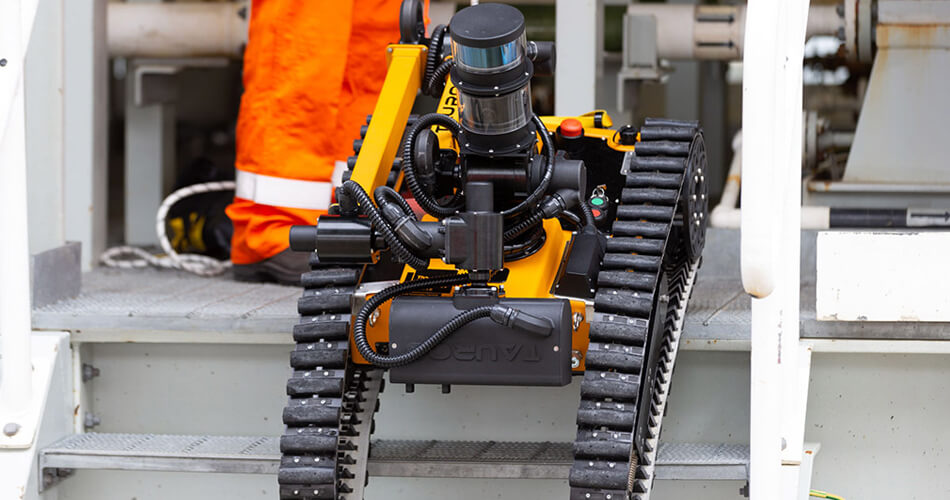Energy company Equinor plans to deploy autonomous robots from Taurob to conduct inspections and maintain its offshore oil and gas wells in Norway.
Equinor is an energy company that develops oils, gas, wind, and solar energy in more than 30 countries worldwide. This company is all set to introduce robots on their oil and gas installations called Taurob. And the best part is, Taurob will be the first ‘autonomous mobile robot‘ they use offshore.
Developed by Taurob, the Robot is named after the manufacturer himself. The purpose of the Robot is to conduct routine inspection and maintenance tasks on offshore installations.
What makes it unique is its classification to work on ATEX ZONE 1, which means it can work on areas where gases are present without creating any sparks that can ignite the gases.
Taurobs are scheduled to help with inspections and maintenance on unmanned or low-manned offshore installations.
Also, Taurobs can freely swivel its robotic arm in 5 degrees and capture images using a 360-degree camera. It takes ultra high definition videos, photos, record sounds, detect gas leaks through thermography and overseas its environment with a 3D LIDAR scanner.
The Taurob Robot uses a map service to pinpoint itself on a map. The Robot’s movement is enabled using a chained track which makes it look like a mini-army tank. Attached are the moveable flippers on each side, which powers the Robot to maneuver on rugged surfaces and climb stairs.
The electronics of the Robot include a ruggedized industrial PC, neural processor, and a safety controller. The Robot communicates information to the control room using a 4G/LTE network.
Designed to serve in harsh industrial environments and extreme weather conditions, the Robot gathers data with unprecedented versatility exceeding human operation in many ways.
The Taurob Robot’s operations include visual inspections, reading dials and level gauges, measuring temperature and gas concentration, and operating offshore without an onsite robotics expert.
The Taurob robot comes with hardware and software from the manufacturer to the Equinor team, but the software developers will do the integration process in Equinor.
Arnt Erik Stene, the software developer in Equinor, says that “they have to make sure that their code does not result in the Robot doing something unexpected which requires a lot of testing. There’s an added focus on safety and security when they were developing it since they didn’t build the actual robot”.
And the most essential part of it is running simulations, which helps them understand how the Robot would be working in the real world. The team uses a simulator with a 3D model of both the Robot and the facilities to run the simulations, which allows them to check and review the Robot’s movements without driving an actual robot.
Since 2020 the team has been working on building the software for Taurob. And they are planning to make the robots available on a large scale from early 2021.

